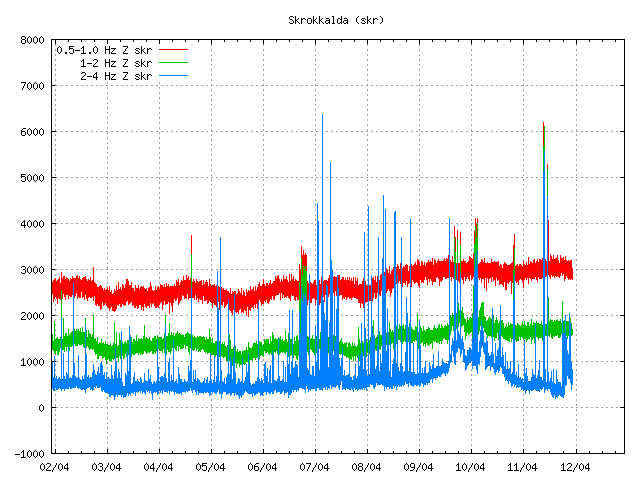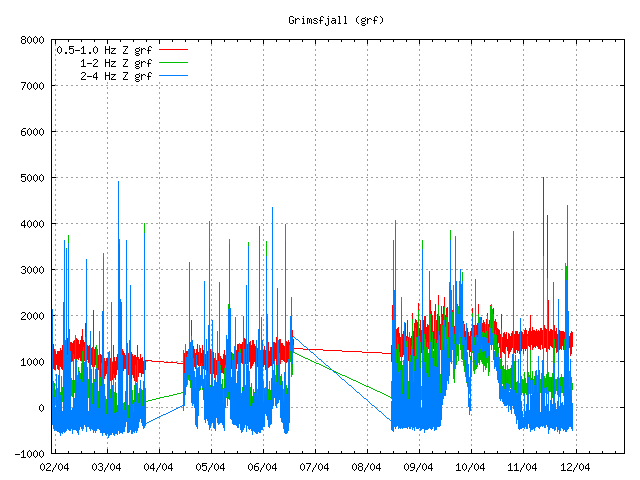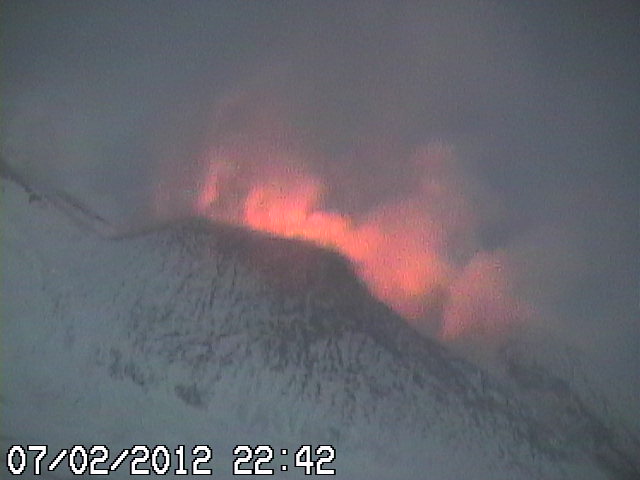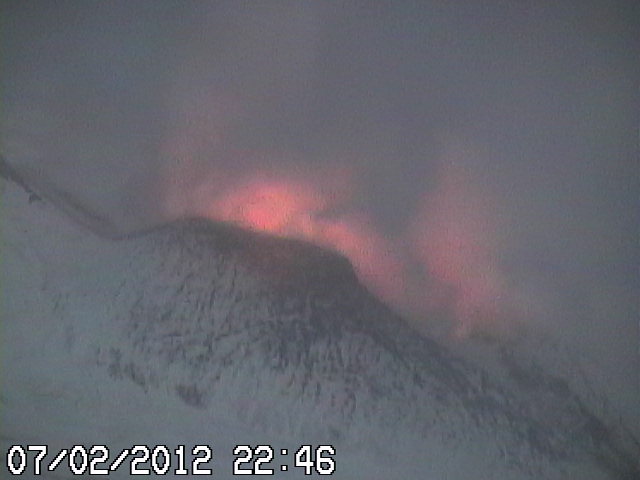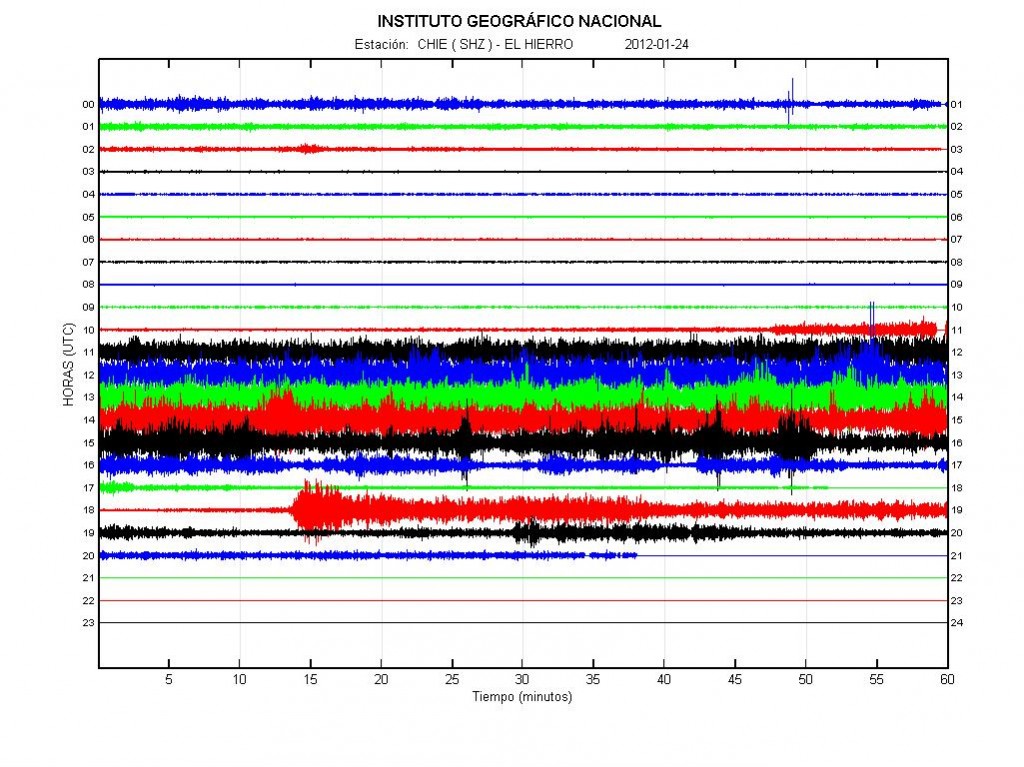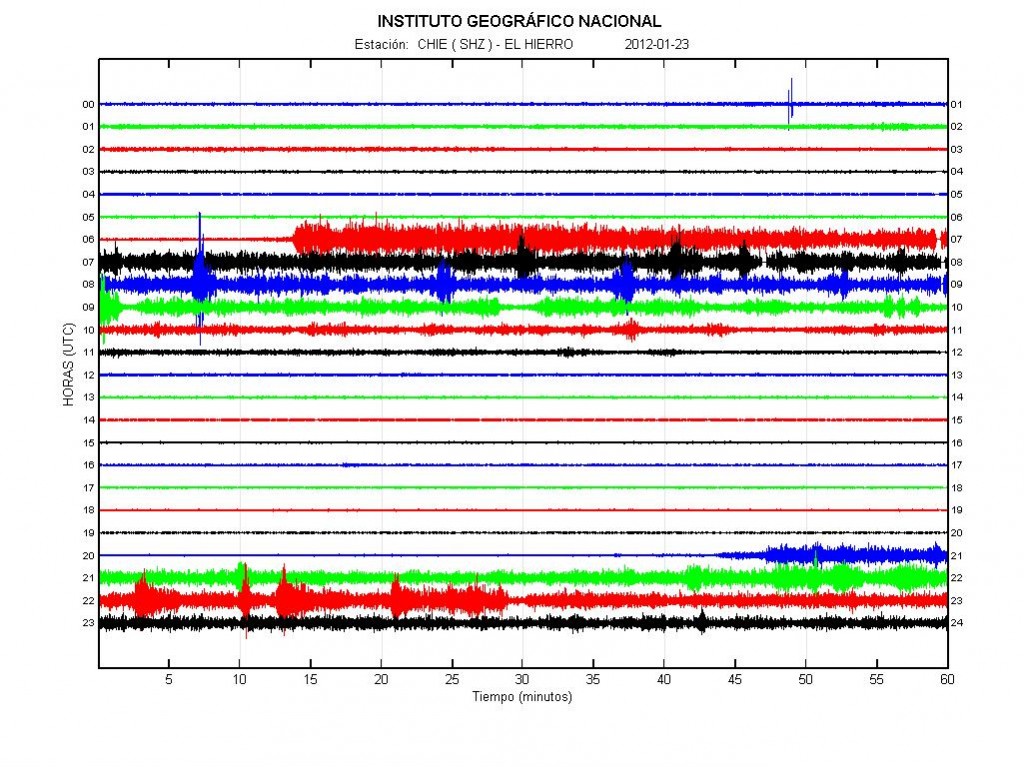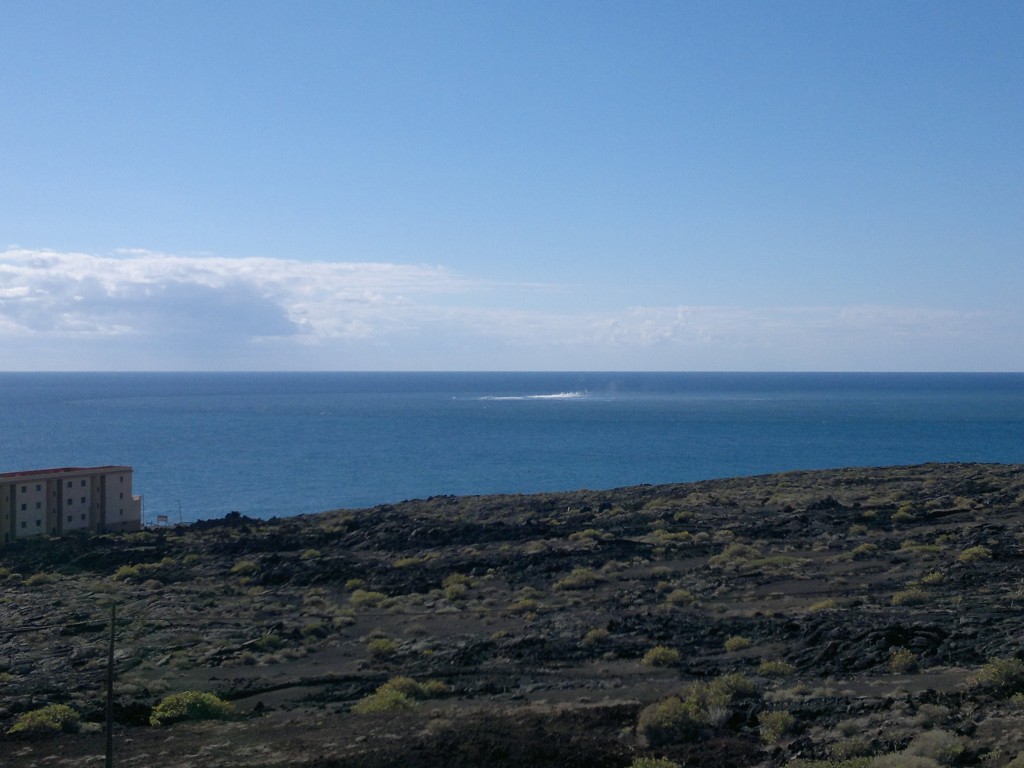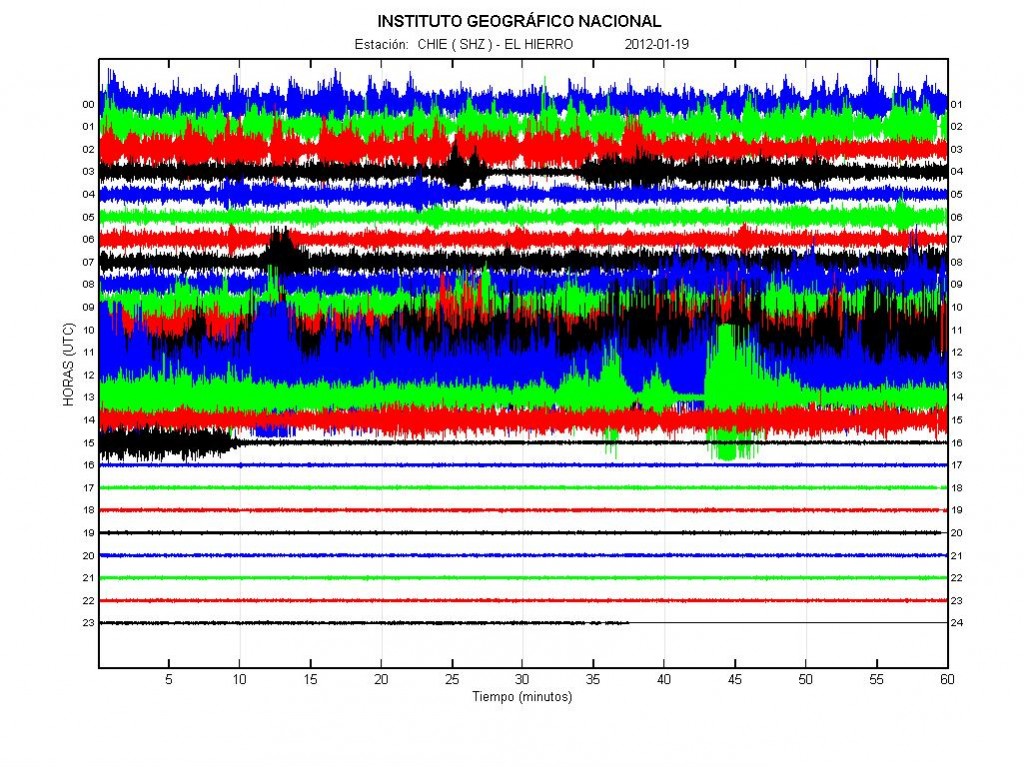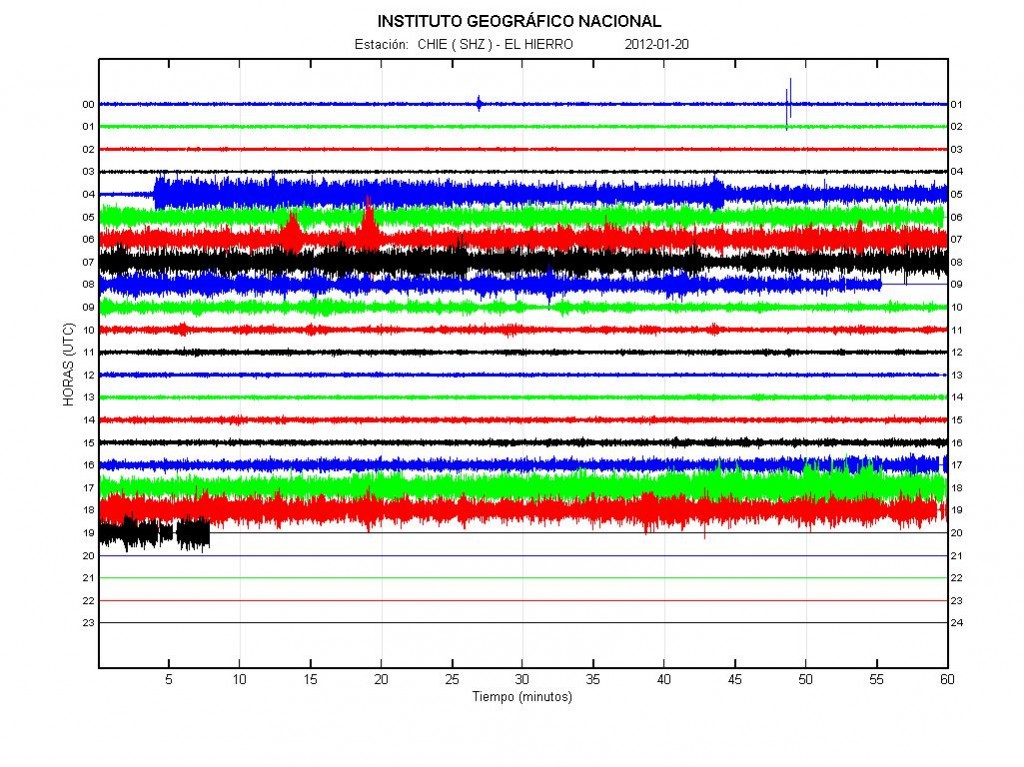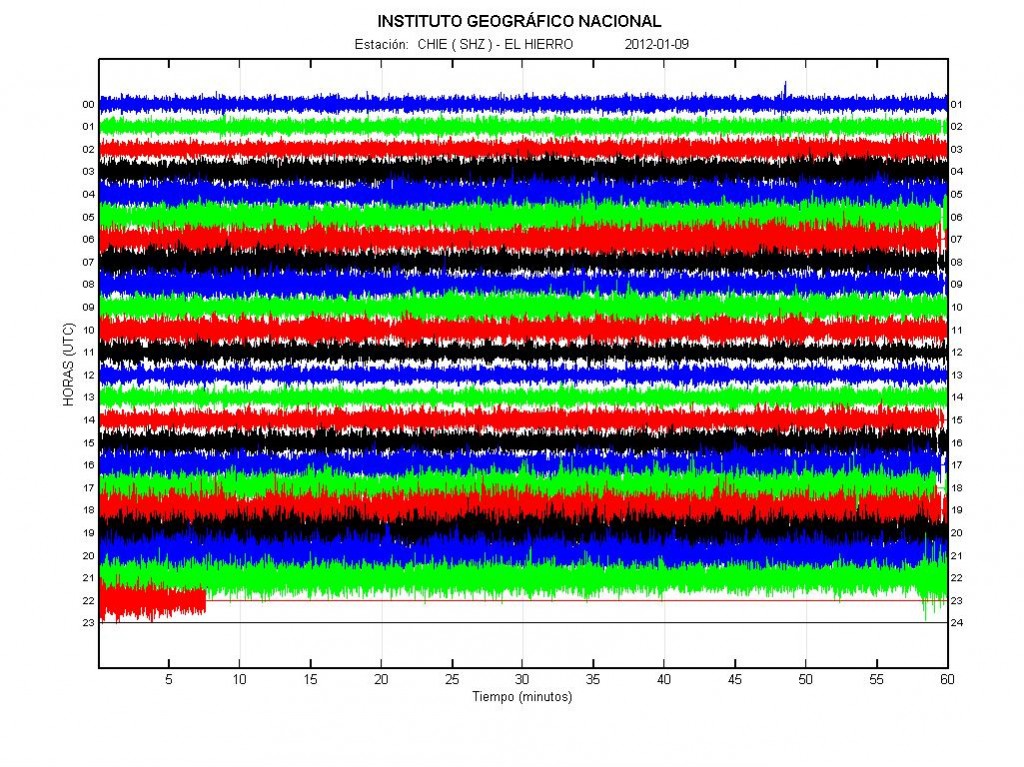Here is an list of eruptions in Grímsfjall volcano and Þórðarhyrna volcano based on data from Global Volcanism Program and documented eruptions. In most cases, eruptions that took place in the early 10 to 16th century are poorly documented if they where smaller eruptions. This even goes on somewhat into the 20th century.
Year ~8230BC +-50 years. Area of activity, unknown. Size VEI=6. Known as Saksunarvatn tephra layer. Dating done with Radiocarbon (corrected).
Year ~4550BC +-500 years. Area of activity, Laki. Size VEI=0. Dating method, Tephrochronology.
Year ~3550BC +-500 years. Area of activity, S of Þórðarhyrna. Dating method, Tephrochronology.
Year ~1950BC +-100 years. Size VEI=2 Area of activity, Raudholar and Brunuholar. Dating method, Tephrochronology
Year ~50BC. Size VEI=2. Area of activity, Halsagigur. Dating method, Tephrochronology
Year ~910AD. Area of activity, ?. Dating method, Tephrochronology.
Year ~960AD. Area of activity, ?. Dating method, Ice core.
Year ~1010. Area of activity, ?. Dating method, Ice core.
Year ~1060. Area of activity, ?. Dating method, Tephrochronology.
Year ~1090. Area of activity, ?. Dating method, Ice core.
Year ~1150. Area of activity, ?. Dating method, Ice core.
Year ~1190. Area of activity, ?. Dating method, Ice core.
Year 1230 +- 10 years. Area of activity, ?. Dating method, Ice core.
Year 1270 +- 10 years. Area of activity, ?. Dating method, Ice core.
Year 1290 +-10 years. Area of activity, ?. Dating method, Ice core.
Year 1310 +-10 years. Area of activity, ?. Dating method, Ice core.
Year 1332, November. Area of activity, ?. Size VEI=2. Dating method, historical documents.
Year 1341, May. Area of activity, ?. Size VEI=2. Dating method, historical documents.
Year ~1350. Area of activity, ?. Dating method, Ice core.
Year ~1354. Area of activity, ?. Dating method, historical documents.
Year 1369. Area of activity, ?. Dating method, Ice core.
Year 1370 +-10 years. Area of activity, ?. Dating method, Ice core.
Year 1390 +-10 years Area of activity, ?. Dating method, Ice core.
Year 1430 +-10 years. Area of activity, ?. Dating method, Ice core.
Year 1450 +-10 years. Area of activity, ?. Dating method, Ice core.
Year ~1469. Area of activity, ?. Dating method, Ice core.
Year 1470 +- 10 years. Area of activity, ?. Dating method, Ice core.
Year ~1471. Area of activity, ?. Dating method, Ice core.
Year 1490 +- 10 years. Area of activity, ?. Dating method, Ice core.
Year ~1500. Area of activity, ?. Dating method, Ice core.
Year ~1509. Area of activity, ?. Dating method, Ice core.
Year 1510 +- 10 years. Area of activity, ?. Dating method, Ice core.
Year 1521 +- 10 years. Area of activity, ?. Dating method, Ice core.
Year 1530 +- 10 years. Area of activity, ?. Dating method, Ice core.
Year 1598. November 7. Area of activity, ?. Size VEI=3?. Dating method, historical documents.
Year 1603. October 31. Area of activity, possibly Grímsvötn. It is unclear. Dating method, historical documents.
Year 1610. Area of activity, ?. Dating method, Ice core.
Year 1619. July 29. Area of activity, ?. Size VEI=2. Dating method, historical documents.
Year ~1622. Area of activity, ?. Dating method, Ice core.
Year 1629. Area of activity, ?. Size VEI=2. Dating method, historical documents.
Year 1632. Area of activity, ?. Dating method, Ice core.
Year 1638 February 24 +- 4 days. Area of activity, ?. Size VEI=2. Dating method, historical documents.
Year 1659 November. Area of activity, ?. Size VEI=?. Dating method, historical documents.
Year 1681 April 10. This might not be an eruption in Grímsfjall volcano.
Year 1684 November 5 +- 4 days. Area of activity, ?. Size VEI=2. Dating method, historical documents.
Year 1697. Area of activity, ?. Size VEI=?. Dating method, historical documents.
Year 1706 October 15 +- 45 days. Area of activity, ?. Size VEI=2. Dating method, historical documents.
Year 1716 October 6. Area of activity, ?. Size VEI=2. Dating method, historical documents.
Year 1725 February. Area of activity, ?. Size VEI=2. Dating method, historical documents.
Year 1730. Area of activity, ?. Size VEI=?. Dating method, historical documents.
Year 1753 October 15 +-45 days. Area of activity, ?. Size VEI=2?. Dating method, historical documents.
Year 1768. This eruption might not have taken place in Grímsfjall volcano.
Year 1774. Area of activity, ?. Size VEI=?. Dating method, historical documents.
Year 1783 to 1785 May. Stop date May 25 1785. Area of activity, Laki, Lakagígar. Size VEI=4+. Dating method, historical documents.
Year 1794. Eruption might not have been in Grímsfjall volcano. Somewhere in West Vatnajökull.
Year 1816 May. Area of activity, ?. Size VEI=?. Dating method, historical documents.
Year 1823 February 4 +-4 days. Area of activity, Grímsvötn-Þórðarhyrna. Size VEI=2. Dating method, historical documents.
Year 1838 June. Area of activity, ?. Size VEI=2. Dating method, historical documents.
Year 1854. Area of activity, ?. Size VEI=2. Dating method, historical documents.
Year 1861. This eruption is uncertain.
Year 1867 August 29. Area of activity, ?. Size VEI=1. Dating method, historical documents.
Year 1873 January 8, it ended in August. Area of activity, ?. Size VEI=4. Dating method, historical documents.
Year 1883 January 15, it ended in April 15 +-5 days. Area of activity, ?. Size VEI=2. Dating method, historical documents.
Year 1887 August 15, it ended in the year 1889. Area of activity, Þórðarhyrna. Size VEI=2. Dating method, historical documents.
Year 1891 November, it ended in March 16 1892. Area of activity, ?. Size VEI=2. Dating method, historical documents.
Year 1897. Location of this eruption in uncertain. Area of activity, ?. Size VEI=2. Dating method, ?.
Year 1902 December, this eruption ended in the year 1904 on 12 January. Area of activity, Grímsfjall and Þórðarhyrna. Size VEI=4. Dating method, historical documents.
Year 1910. Area of activity, ?. Size VEI=?. Dating method, ?.
Year 1919. This eruption is uncertain.
Year 1922 September 29 +-1 day. This eruption ended on October 23. Area of activity, ?. Size VEI=2. Dating method, historical documents.
Year 1933 November 29 +-1 day. This eruption ended on December 9 +-1 day. Area of activity, North of Grímsvötn Caldera. Size VEI=1. Dating method, historical documents.
Year 1934 March 30, this eruption ended on April 7 in the year 1934. Area of activity, Close to south caldera wall. Size VEI=2. Dating method, historical documents.
Year 1934. This eruption is uncertain. But it took somewhere in Vatnajökull glacier.
Years 1938 May. Area of activity, 8 km south of Svartibunki. Size VEI=1. Dating method, historical documents.
Uncertain eruptions the years 1939 June, 1941 April, 1945 September 25, possible VEI=1 eruption, 1948 February.
Year 1954 January 15 +-45 days. Area of activity, ?. Size VEI=1. Dating method, historical documents.
Year 1954 July, this eruption is uncertain. Area of activity, north and south part of the caldera. Size VEI=1?. Dating method, historical documents.
Year 1972 March. This eruption is uncertain.
Year 1983 May 28. This eruption ended on June 2. Area of activity, close to the south part of the caldera wall. Size VEI=2. Dating method, historical documents.
Year 1984 August 20 (or around that date). This eruption is uncertain.
Year 1996, September 30. This eruption ended on November 6. Area of activity, Gjálp fissure. Size VEI=3?. Dating method, historical documents.
Year 1998, December 18. This eruption ended on 28 December. Area of activity, South Caldera wall. Size VEI=3. Dating method, historical documents.
Year 2004 November 1. This eruption ended on November 4. Area of activity, South West and east sides of the caldera. Size VEI=3. Dating method, historical documents.
Year 2011, May 21. This eruption ended on May 30. Area of activity, South West part of the caldrea. Size VEI=3. Dating method, historical documents.
This is just short overview of the eruptions that have taken place in Grímsfjall volcano and in Þórðarhyrna volcano. It does not contain a lot of details on them. Please not that this blog post might contains errors. If you see them. Please comment on them and I am going to fix them soon as I can.
This blog post is going to be updated with time.
